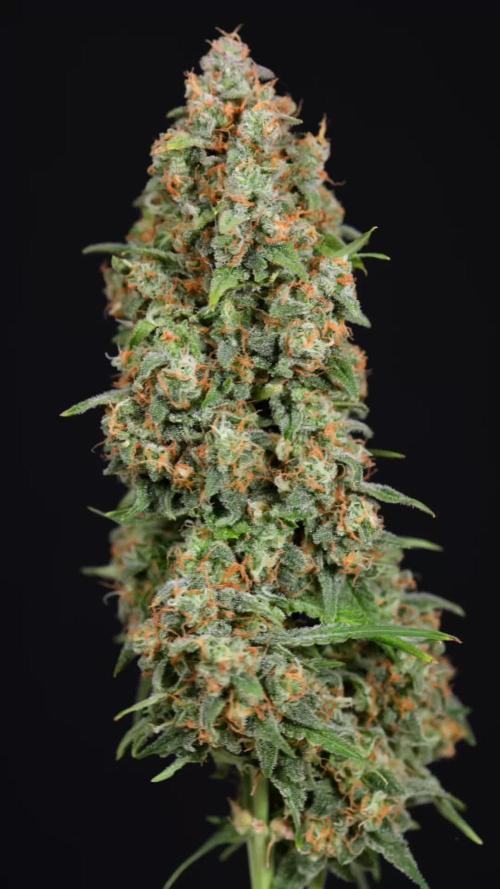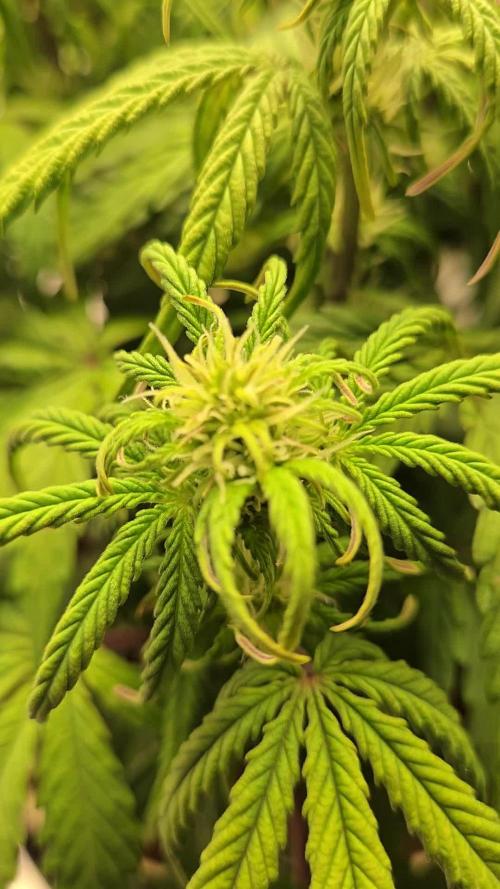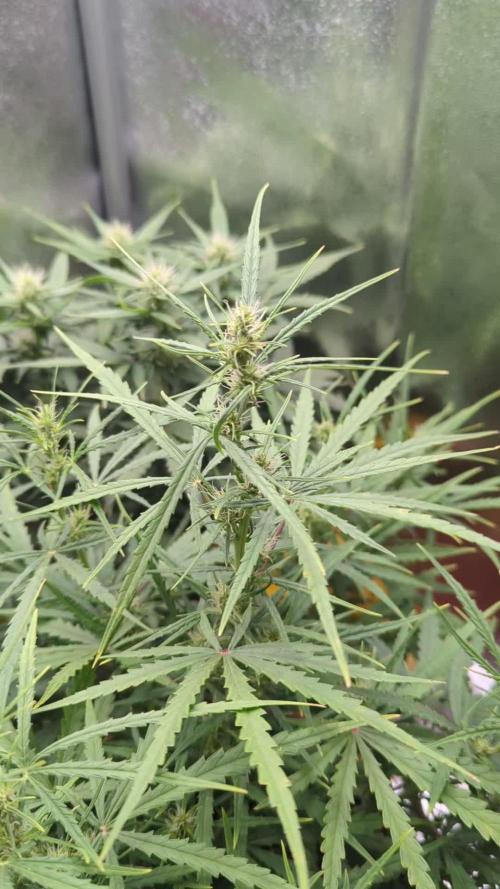The Grow Awards 2026 🏆 




































Likes
8
Share


@Black_Widow
Follow
Мне очень понравилось выращивать этот цветок , хотя было и не просто
Запах от него чудесный , лимонный едкий
Много смолы, очень липкие пальцы при маникюре
Много пил воды , к удобрениям на ура , да и вообще красавица выросла !
Создатели из Sativa Club молодцы !
Likes
26
Share


@KingSalomonsWeed
Follow
Day 105, Flower 35.
August 14.
Hallo Leute.
37% THC?
Auf dem Weg 👍..
Trinkt ordentlich.
Bin mit ihr sehr zufrieden.
ANESIA SEEDS
FUTURE1
Der Qualm ist heftig.
Likes
9
Share


@MG2009
Follow
01/08/2022
Took 3 more smaller ( micro) clone to sure up my supply lol
She will stay small in this size pot but her clones will have time to veg a long time.
Last picture is fungal dominant compost, getting ready for a long brew 36+ hours. I inoculated compost with baby oat meal
(a great fungal food) equal parts with Happy Frog potting mix (loaded with good stuff) posted label with pics. And light water till she stays together with out falling apart (don't over saturate) cover but don't seal you need a little air flow, wait till solid white blanket appears and brew in good water 36+ hours till done.
Likes
9
Share


@Chupadeos
Follow
La temperatura en la zona que vivo está muy alta y es casi imposible tenerla más baja,y no puedo instalar aire acondicionado,así que están con mucha ventilación y agua.ellas se ven muy sanas y con muchas ganas de absorber abonos,han reaccionado muy bien al cambio de foto periodo,después de tener estás temperaturas tan altas ellas no muestran signos de problemas se ven muy sanas y fuertes ,en el futuro veremos qué tal van bajo temperaturas incluso más altas ,aunque personalmente las veo perfectas para soportar lo que venga, estas pequeñas nos van a sorprender.
Likes
29
Share


@BigDaddyK
Follow
Looking lush 😜😜😜😜😜
One of these is just ridiculous, I mean ridiculously ridiculous , have a look in th3 video
All I can hope is the weight pulls it apart 🤞
Friday started the dragon force on plant 1 , thee other is a week behind
Likes
12
Share

Four plants.... same medium.... same pot size.... same nutes.... same everything.... lots of Bud sites from the bottom to the top......Thick main colas..... the other two spindly..... all of the buds at the top........... added a second 300 watt LED
Likes
2
Share


@7circleshg
Follow
Se aplico la tecnica ScrOG, es un estrés leve por lo que esperamos buenos resultados. La planta que llamamos "D" muestra algunas deficiencias de N por lo que trataremos de corregir esto.
Likes
8
Share


@Bread_n_Buds
Follow
Our Watermelon Candy Automatic #1 from Zamnesia Seeds is ready, and we're excited to show it to you.
This plant has always performed well, a true powerhouse of nature as it grows, especially as it swells with high-quality central and lateral flowers.
Ripeness - The resin content is excellent. The trichomes are mostly white and milky (about 60%), with some clear (20%), and some amber (20%). Some beautiful red-headed trichomes are quite common. The pistils are almost all red (about 80%). Remember, the plant should be harvested according to your taste. Since this is a 50/50 plant, I want to maintain the sativa/day-use characteristics and not turn it into an indica bomb by over-ripening the amber colors. (Amber is a sign of THC oxidation.)
The overall shape of the plant is truly splendid.
Techniques chosen: As mentioned, we only performed pruning, lollipopping, and defoliation here. Basically, we simply cleaned the bottom parts, which, as mentioned, helps us achieve better results at the top.
We're 100% organic and 1000% Plagron, as always.
The soil we chose is the recently launched Plagron Bio LightMix, which will allow us to start with smoother and more reliable watering, without the sudden changes that liquid fertilizers can cause. A week's worth of soil is enough, so don't overdo it.
Choose your preferred style and calculate your results on the website:
www.plagron.com
Visit the new Growshop area on the Zamnesia website:
Z - https://www.zamnesia.io/it/531-growshop
A fantastic strain, not too tall but very bushy! Give it a try!
Z - https://www.zamnesia.io/en/7484-zamnesia-watermelon-candy-automatic-semi-seeds.html
Z - This feminized strain boasts everything you've come to know and love about the original cultivar, but with some welcome improvements. Combining Watermelon x Candy Kush with a pinch of ruderalis genetics results in a strain you won't want to miss, we promise.
Being an autoflowering strain, the growing options are virtually endless. So, whether you choose to grow her indoors or outdoors, one thing is certain: she'll be extremely easy to grow. Otherwise, she'll take care of herself without requiring any special care. With a little general care and pruning, you can control her growth all the way to harvest. She's perfect for beginners growing indoors, as well as more experienced growers looking for easy-to-grow, high-yielding plants.
Although she's not a particularly tall plant, her size can be easily controlled with LST, to which she responds positively. So, if you're interested in experimenting with this technique, don't be afraid to try Watermelon Candy Auto.
In just 9-10 weeks from seed to harvest, this strain grows rapidly and, just like the original, will display a bushy canopy completely covered in large buds. Regardless of your growing environment, you can expect impressive yields. Indoor plants produce 350-400 g/m², while plants left to flower outdoors produce 50-100 g/plant. These are quite substantial yields for an autoflowering strain.
With a THC level of 20%, Watermelon Candy Auto is a 50/50 sativa/indica hybrid, offering users the best of both worlds. After a few tokes, you'll feel more optimistic, and even the most stoic smokers won't be able to suppress a smile. After a few minutes, a deep sense of relaxation will take over, perfect for welcoming you home after a long day.
Overall, Watermelon Candy Auto builds on the qualities that made the original so popular, but it also has other qualities that make it a much simpler and more practical option.
You know it, but I recommend it. You'll find so much beauty here, essentially "the best nature has to offer."
Z - www.zamnesia.com
Music // www.radionula.com
+ Feng Shui Music
+ Frequency 432Hz
Likes
8
Share


@Xabii
Follow
Added a photo to show where I take RH/Temp measurements from in the tent, pretty much inside the canopy.
Went lower on EC this week to give the plant a little time to regenerate and pack some more before harvest.
The dehumidifier is pulling less and less moisture out of the air every day, this is a additional sign to me that the plant is nearing its end.
Will harvest the plant next week, maybe on Christmas :)
Values are average of the day.
DATE - °C - RH% (Tent Temp/RH)
20241216 23.6 61.7
20241217 24.2 62.2
20241218 23.3 61.5
20241219 22.9 61.7
20241220 22.1 60.7
20241221 23.1 61.5
20241222 22.6 60.9
DATE - PH
20241216 6.09
20241217 6.03
20241218 6.14
20241219 6.16
20241220 5.99
20241221 5.97
20241222 5.87
DATE - ORP (mV)
20241216 74
20241217 63
20241218 30
20241219 11
20241220 50
20241221 24
20241222 82
DATE - EC(us/cm)
20241216 2097
20241217 2004
20241218 1692
20241219 1749
20241220 1636
20241221 1688
20241222 1695
DATE - CF
20241216 20.97
20241217 20.05
20241218 16.92
20241219 17.49
20241220 16.36
20241221 16.88
20241222 16.95
DATE - °C (Reservoir)
20241216 22.1
20241217 22.1
20241218 21.8
20241219 22.2
20241220 20.9
20241221 21.6
20241222 21.4
Likes
43
Share


@Esoteric_growing
Follow
Seem to look a little over watered, probably should have let them root out the blocks a little more before transplant. Also humidity is on the low side but still growing at a fantastic rate.
The plant in the middle is getting removed, seems to be the runt of the litter no pun intended
Likes
7
Share


@bunlarbizimkomutanim
Follow
There was a visible attack this week. The temperature is between 25-27, the humidity varies between 60-65. There was a slow development due to excessive irrigation and I could not do LST due to the distance of the room to me. I am planning to fall leaves next week.
Likes
12
Share


@Staffedition
Follow
Всем привет друзья!
Решил попробывать фотопереодный поднять.
Это будет мой первый опыт с фотопереодными растенями.
Cali Buds очень хороший сидбанк, не знаю почему его нету в списках бридеров!
#Smail_Seeds
Likes
2
Share


@MrGrowDiarie
Follow
Day 42
By Day 42, the plant shows a noticeably fuller and more compact appearance compared to the previous week. The top section is dominated by clusters of developing floral structures, which have become denser and more defined, The lighter tones in the new growth contrast with the darker green of the older leaves, giving the plant a layered look.
The leaves around the upper areas appear slightly curled and somewhat softer in structure, while the lower foliage still displays a mix of green shades with some patches of discoloration. The overall silhouette has shifted from a vertical, stretching phase to a more rounded and weighty form, as the upper clusters continue to
thicken.
Likes
11
Share


@DimJesus
Follow
Saludos 🙌 tercera semana completa, aumentando la dosis de los fertilizantes.
Quité los primeros pares de hojas para darle paso a las ramificaciones que se puedes ver en las fotos, está brotando el quinto nudo pero me parece que aún está un poco pequeña para la LST y corte apical, que piensan?
Donde vivo hay muchas variaciones de temperatura pero generalmente el grow se mantiene entre 23° y 29°, la humedad también varía bastante pero no baja de 50% ni sube de 78%.
Ansioso para la floración 🙏 having a lot of fun 💪
Likes
6
Share


@Nune2021
Follow
Hey Leute die strains machen sich sehr gut man kann gut unterschied Sativa indika /indika sativa sehen das unterschiedliche strain hybride sie wachsen sehr gut die machen keine Probleme bis jetz unkompliziert
Likes
2
Share


@el_cultivito
Follow
Got some sealant to properly seal my DIY CO2 generator and lil maggie seems to like it. Her buds are starting to swell up.
For the CO2 generator I did the following:
2 Liter Bottle -> 1 Liter Bottle -> Fan
(Fermenting) -> (Water Filter) -> (Distribute)
Ingredients:
Sugar - 3/4 Cup
Yeast - 1 Teaspoon
Water - 6 Cups
Step 1:
Add 6 cups of room temperature water to the 2 liter bottle.
Step 2:
Add 3/4 cup of sugar to the water and mix until sugar is fully dissolved.
Step 3:
Add 1 teaspoon of yeast and let sit until bubbles appear in water filter bottle.
Step 4:
Direct the end hose to the plant canopy. CO2 is heavy so it falls, use fan to blow it to the plant canopy.
Likes
2
Share


@HashishOculus
Follow
📅 Week 9 (Days 56–62)
🌸 Mid-Flower | Bud Development | Nutrient Monitoring
This week saw a clear ramp-up in flower density. The buds have begun to take on noticeable weight, with trichome coverage increasing steadily — not just on the sugar leaves, but now crawling onto small calyx fans. There’s a tangible stickiness to the upper canopy, and the diesel/cardamom/citrus terp profile has deepened. Aroma is more persistent after lights-on, lingering even after ventilation.
Leaf health has required a watchful eye. The lower fans have continued to yellow and were removed incrementally. Nothing alarming yet - mostly older leaves giving up their stores. But toward the end of the week, I spotted some yellowing beginning to creep into mid-canopy areas. No burn, no twist - just fading.
I’ve continued feeding - full strength Advanced Nutrients this week, including one adjusted dose focusing only on Grow (3.5 mL in 2L) to boost nitrogen in response to the yellowing. Watered with 2L at pH 6.4. No runoff, but weight and hydration have been monitored closely. Still a slight risk of earlier shallow root development limiting uptake, but the plant is holding its posture.
One environmental slip-up: I noticed the leaf edges starting to taco slightly mid-week. Tracked it down to the humidifier being off. Once re-enabled, RH returned to 50–55%, and the issue self-corrected. No further signs of VPD stress.
Trichomes:
Still mostly clear with very few cloudy. No amber in sight. Maturity is progressing slowly - right on pace for a post-vacation harvest.
Action points:
– Continue feeding through Week 10
– Monitor yellowing mid-canopy - may respond with another Grow-only supplement if it progresses
– Keep RH stable with the new humidifier
– Macro checks every few days to watch for trichome shift
🗓️ Overall:
A stable week with increasing density and trichome output. Aroma building. No rush yet — plant is following a long, even curve into maturity. Feeding schedule holds, with my daughter planned to feed once or twice while I’m away, then transition to water only.
Likes
41
Share


@Skinnytalls420
Follow
Day 44-4/12/21 everything is looking a lot better now!!! Day 47-7/12/21 plants are doing well a lot better now two of them are showing signs of purple!!! Day 49-9/12/21 everything is going better got some burnt leafs on a few but hopefully okay!!! Gave them a liter each today with food!!! Day 50-10/12/21 some are behind others but there’s this one plant that’s going purple I think it’s gonna be great!!!!
Likes
36
Share


@TheGreenLeopard
Follow
Loved growing this. Sang its praises rhe whole way through because it just looked like a beast. I like the pretty Cali strains but I always find the yields are close to frustrating for abilities not up up there. Overall the strain helped me take chances that paid off so I really enjoyed it. Will grow again.
Threnneighbors should smell this on the balcony this summer 😂💚🙏🏼



















